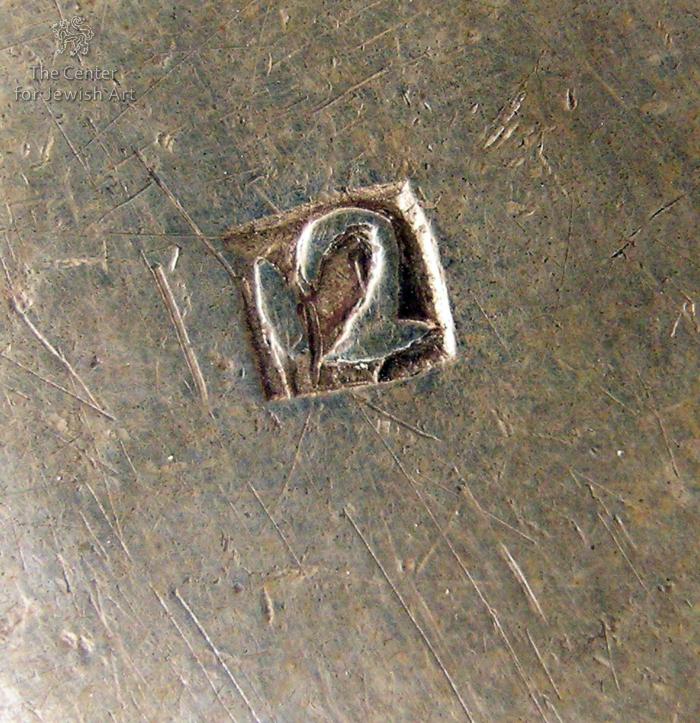Obj. ID: 35781 Kiddush cup made of Shmirot, Poland, circa 1880

sub-set tree:
The following description was prepared by William Gross:
The sanctification of the Shabbat and Holidays is connected with a blessing recited over wine or grape juice. While the wine can be drunk from any vessel, often special cups are created for the purpose. In most cases, regular cups are simply decorated or inscribed with names or blessings, rendering them exclusively for the Kiddush.
Among some Hassidic courts, it was a practice for the Rabbi to give a blessed silver coin to his Hassidim as an amulet. Such protection might be given for all manner of life events, from healing from an illness to success in travel and the amulet was carried on the body of the recipient. This custom was particularly popular among the Ryzhiner Hassidim and these coins were called "Shmirot". To such coins were attributed extraordinary power and value and they were treasured with great care and love.
After the specific event for which they had originally be given, such a coin or coins were used in the making of other objects, which maintained the special aura of the Rabbi. Such a coin would be melted in other silver with the amuletic valued being spread evenly to all the silver. Then a ritual object would be fashioned by a silversmith and the special nature of the item would be inscribed on it, indicating in one of several ways that this object had been made from "Shmirot". All are of considerable rarity.
This object is a Kiddish cup fashioned from such silver. On this cup, the inscription indicating Shmirot is found in the inscribed words "Zeh ha-Kesef shel Tzadikim" (This is the Silver of the Righteous). Such cups were used for blessing wine so that each use conferred again the power of protection granted by the Rabbi.
These cups were decorated, using both vegetal motifs and the figures of different animals. In this instance, a unicorn appears on one side while an eagle is on the other. The inscription is along the upper rim of the cup. These two figures appear often in the area of Galicia on such silver items and among the painted decorations in Synagogues and on caved headstones.
Inscription: This is the Silver of the Righteous (Zeh ha-Kesef shel Tzadikim)







